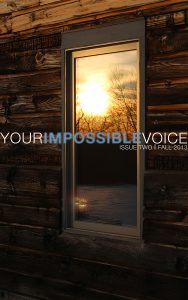By Mary Burger
Prologue
Everybody readily accepted that no one had the same idea of ‘red.’ When different people looked, they saw different things. Colors were for when words couldn’t do the job. By extension this was true for everything that everybody looked at.
I put gifts outside, beside the dumpster where they stayed clean. A blanket, a flashlight, a pair of socks. When I looked later they were gone.
1.
The honest facades of these strange neighborhoods, mostly brick, mostly squared off against the street and against each other, felt familiar. Even the simplified bungalows of the old coast were more aware of being looked at. These brick boxes existed to be lived in, but they were no less virtuosic for that.
In the way that the flat, regular street grid accommodates movement equally in any direction, the houses, built square to the edges of the building envelope, made the streets seem like landscapes without mysteries. But the pervasive alleyways made a nameless second grid that shadowed every street and harbored what couldn’t fit in the named places.
A shadow is a ruin of the original. The clean edges reappear as a monstrosity, as an alien erupts from within. It was the figure/ground battle, one always struggling to overtake the other.
A shadow touches surfaces without transforming them. Like light, only with shape. A shadow gathers the stray bits of surface together and presents them as a single thing. All the monstrous possibilities that hide between one straight line and another emerge.
The grid was a way to organize a lot of people at one time. The identical intersections looked the same to anyone. Only the monstrous topography made one corner a cavern and one a hill. The grid of forward, forward, forward made us feel that each thing was like the other, even if they were not at all alike.
It was the monster that made the difference. The monstrous failure of perfection turned the straight lines into tangle.
A maze is often made of such accessible right angles and flat surfaces. The mystery needs to be compelling to keep us going through the entanglement.
A refreshment can break up the forward-forward-forward march of the grid. It is the nature of the grid that any direction you go is forward.
The labyrinth is there to conceal the infidelity. A tangled path makes it harder to find the evidence. If it can’t be seen — is that fiction?
A monster bends the grid into a tangle as a tumor hijacks the blood supply for itself. The tumor’s tangle has no solution because it references nothing but itself. The tumor realigns all the efforts of the organism to itself, like a mirror bends space into its own planar surface.
They aspired exactly to the limits of their capacities.
They risked nothing. They found the shape of the possible and never wavered.
Those flat, loving facades.
Freed from the requirement to move forward, the monster dissipates. It moves in quantum pathways, everywhere. A fluid taking form within a gas.
All organs might once have started as tumors that then became useful and so were perpetuated until now their very being defines the organism. The monster that shatters tranquility later joins the normal rhythm, then becomes indispensible to it, then becomes the meaning of its world.
Mary Burger is a writer and artist in Oakland. Her books include Sonny (Leon Works, 2005) and Then Go On (Litmus Press, 2012), and the anthologies Biting the Error (Coach House Books, 2004) and An Apparent Event (Second Story Books, 2006.)
Issue 2 | Winter 2013
Come Find Me
Emily as a Mango Hitting the Ground

